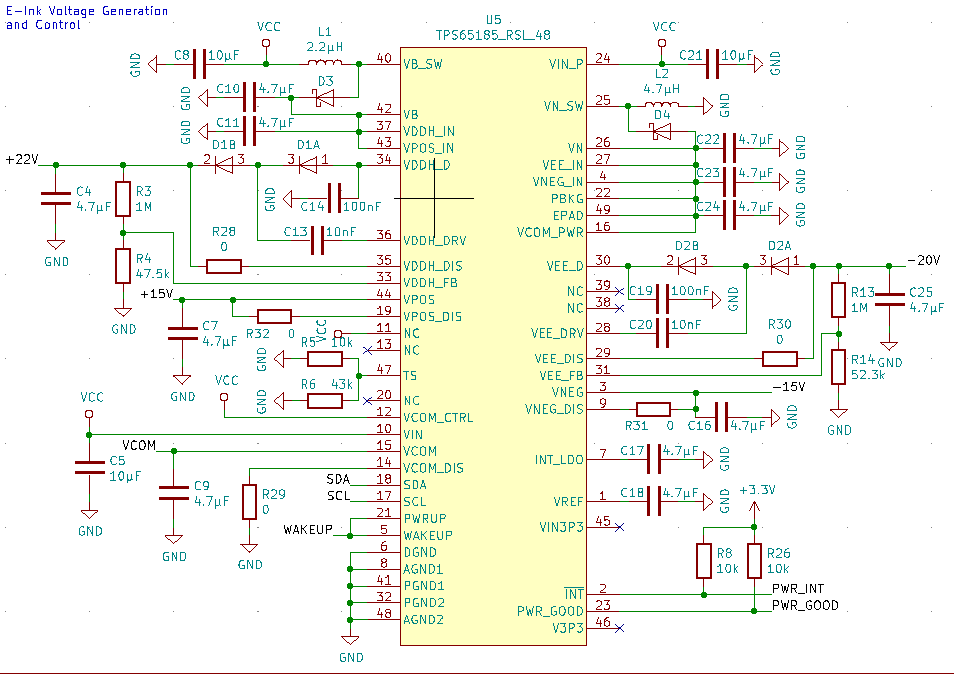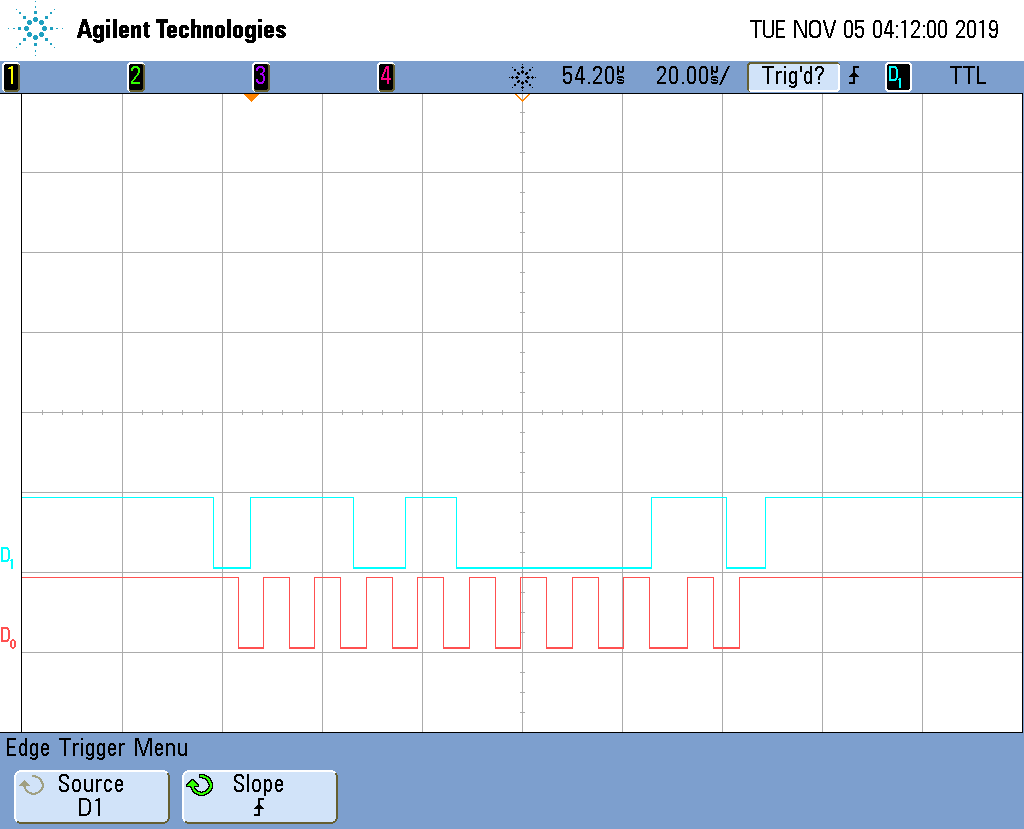Other Parts Discussed in Thread: USB2ANY, IPG-UI
Hello,
I am currently prototyping with the TPS651851 that I am controlling with an ESP32 and I am unable to communicate with the chip over I2C. I have a board built and I am able to communicate with the other I2C chips, but the TPS651851 does not respond to any I2C communication. Since it is a prototype, I realized that I had made a few mistakes with my design initially, so I have a few bodge wires, but testing with a voltmeter and scope it seems like at the very least I should have all the power and communication lines working correctly. I am planning on getting another board built soon to fix my known issues, but since I have not been able to test the TPS651851 I am worried that the new design wouldn't work either. The schematic that I am currently using for the chip is this:
As what I assumed was the bare minimum to get communication working, I have verified that SDA and SCL are connected to the pads for the chip. Also, WAKEUP is 3.3V, VIN is 4.2V, and every ground pin is at ground. Are there any obvious issues with the design I currently have? Also, could this be a layout issue which would be a little harder to diagnose?
Finally, as I was reading through the questions on this site, I saw one saying that you couldn't leave PWRUP tied to GND in order for the chip to function correctly. From reading the datasheet, it seemed like PWRUP should be able to be tied to GND as any function it has occurs on positive or negative edge triggers and that you should just be able to use I2C commands instead. The only reason I am asking this is because I do not have enough pins on my microcontroller for a PWRUP pin, so I have it connected to WAKEUP at the moment as suggested in the datasheet, but I would prefer to have finer control rather than off and on and producing voltage.
Thanks in advance!



